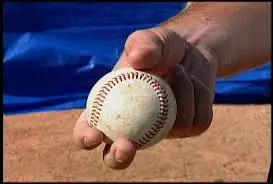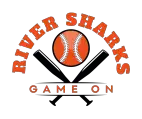Whether you are a professional baseball player or just play for fun, learning to perfect different types of pitches is an essential if you are a pitcher.
In this guide, we will go into detail about how you can throw a two-seam fastball, a sought-after skill that a lot of baseball players have mastered in Major League Baseball.
What is a two-seam fastball?
The two-seam fastball is a type of pitch in baseball that is similar to a four-seam pitch in a lot of ways.
The way that the ball is thrown by the pitcher means that the ball will spin and travel extremely fast for a baseball pitch. This is ideal if you want to get a strike against the batter and therefore get them out faster.

What is a four-seam fastball?
If you are unfamiliar with baseball pitches and the differences between them, it will help you to know what a four-seam fastball is before we go into how to execute a two-seam fastball.
For the four-seam fastball, you will hold the ball with your fingertips perpendicular to the seam and the rounded seam, the horseshoe seam, will be facing your ring finger when you throw.
This tends to be quite a popular way to hold a ball ready for a pitch in baseball. Because of this, a few other pitches are based off the set up, including the two-seam fastball.
How should I grip the ball for a two-seam fastball?
This is the most important part of pitching a two-seam fastball: the set up.
The easiest way to visualize how your hand should be on the ball is to imagine your two first fingers (index and middle) following the two seams on one side of the ball, then your thumb on the opposite side of the ball and running perpendicular to the other seams.
This way, all of the force from the hand in the throw will be generated from the middle finger that will create some backspin.
The reason it is called a two-seam fastball is because your index and middle finger are running parallel with, if not directly along, the two seams of the baseball.
Are there any ways that I can get a better two-seam fastball?
There are a few tips and tricks that are useful to keep in mind when you are practicing your pitching. We will go into detail of each one here:
- Pressure: make sure that, when throwing the ball, the pressure is coming from your index and middle fingers. This will allow for a good amount of backspin, a necessity in this type of pitch. The pressure should mainly come from your middle finger but be accustomed to a small amount from your index finger to balance out the backspin.
- Finger placement: make sure that your index and middle fingers are on the seams and running along them. This could be dependent on the size of your hands, but most people should be able to spread their fingers enough to place each finger on the two seams, making this the two-seam fastball.
- Pronation: this is the angle at which your arm and wrist will be when you are releasing the ball. If you exaggerate the pronation, the spin will be more prominent, and the ball will be harder for the batter to hit since it is more likely to swing back into the hit-zone.
How do I get used to a two-seam fastball pitching grip?
These are actually reported to be the easiest to master in baseball. This is probably down to the simplicity of the grip with the two fingers running one way and the thumb running the other way on the opposite side of the ball.
As with anything, when you are learning a new skill or pitch in baseball, practice makes perfect.
Ideally, you could practice with a batter and a catcher, so that you can get a real sense of how well you are throwing with real players. If this is not always feasible, the beauty of being a pitcher is that you can literally practice whenever you want.
Devise an area that you can throw to and see how well you can throw a two-seam pitch within the hit-zone each time.
How pronounced should the pronation be?
This can completely depend on the type of two-seam fastball you want to achieve. If you watch some clips of professional baseball players and slow down the footage of them pitching, you can get a sense of the amount of pronation in their arms.
Fastballs that are the hardest to hit for a batter tend to be when the pitcher has put a lot of backspin on the ball with their index and middle fingers, or when they have a very pronounced pronation of their arm and wrist.
This just means that their arms are further from their body in relation to their elbows upon the release of the ball.
Conclusion
The grip on the ball really makes the two-seam fastball and actually gives it this name. You need to make sure that your middle and index fingers are running along one seam and that your thumb is perpendicular to the other seam.
When you are throwing the ball, decide how pronounced you want the pronation of your arm and wrist to be, this will result in a ball that bends back round to the hit zone.
The main thing to remember is that you need to practice a lot to get used to the motion of the two-seam fastball, but the grip should feel quite familiar to seasoned baseball players.
